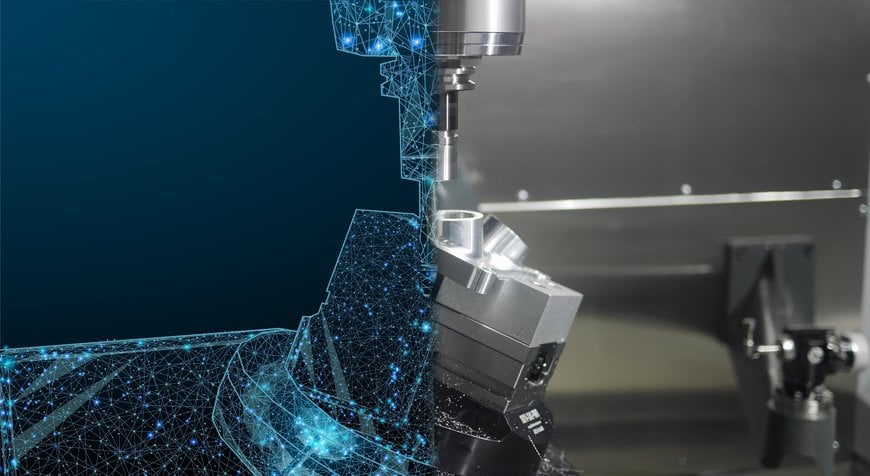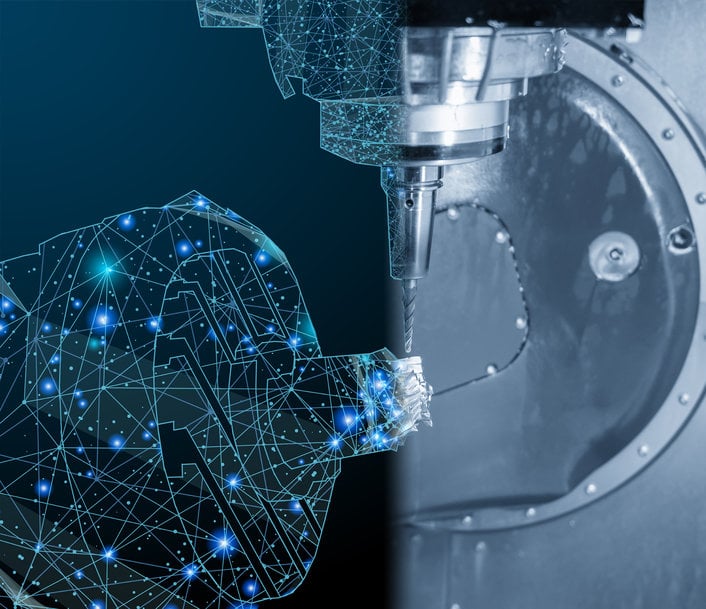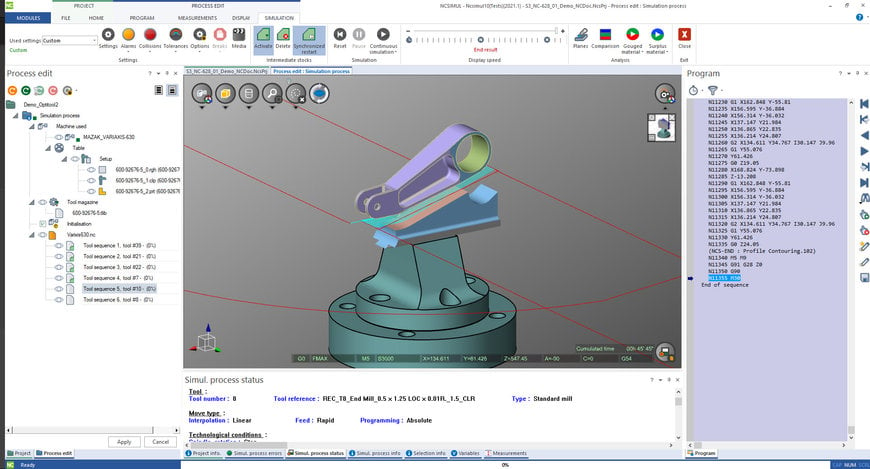www.ptreview.co.uk
12
'20
Written on Modified on
Hexagon CNC machining simulation helps manufacturers avoid notorious 5-axis singularity to improve quality
Virtual manufacturing software avoids quality issues machining complex parts, reduces time to simulate toolpath adjustments.

New smart CNC machining simulation software, released today by Hexagon’s Manufacturing Intelligence division, addresses long-suffered 5-axis machine instability so manufacturers can achieve quality without sacrificing productivity.
Enhancements to the NCSIMUL software, that serves as a digital twin of the machine to plan and optimise NC programming, enable machinists to determine the location of the 5-axis singularity point and avoid it for the first time. This follows customer requests for vital assistance in ensuring a high-quality surface finish on their completed parts. It is particularly important when machining turbine blades and impellers for the aerospace industry – as 5-axis continuous cutting is used for 80 per cent of aerospace parts – along with complex automotive, and oil and gas parts.
When the toolpath generated by CAM software passes through, or near to, the singularity point, the machine tool behaves erratically. The machine tool can vibrate, causing ‘chatter marks’ on the component being machined, which affects the quality of the surface finish. In order to do the job right the first time and reduce cycle times to meet delivery times, it is vital to stop the singularity point.

The new release helps predict the singularity point. By predicting the lines of code where there may be problems with vibrations and surface quality, programs can be improved by modifying cutting strategy parameters or changing strategies altogether. It also helps manufacturers optimise the stock position and orientation, which affect the achievable cutting feed rate of 5-axis continuous trajectories, leading to cutting factors that can differ significantly from the CAM program for a given machine.
“Singularity point analysis makes it possible to achieve the required surface quality for complex parts virtually, before going to the shop floor to cut the first part,” says Philippe Legoupi, Product Owner, Hexagon’s Manufacturing Intelligence division. “NCSIMUL also now simulates the performance of the target machine to evaluate when the 5-axis cutting factor is close to 100 per cent, so that users can modify the stock orientation and position to achieve the desired feed rate. Armed with these two capabilities, manufacturers can now decrease 5-axis cycle times and achieve consistent quality for any part.”
A new material-specific optimisation tool, Optipower, was introduced last November that optimises the program and limits the power necessary to remove material. In NCSIMUL 2021.1, Optipower now calculates the cutting force applied to the tool’s external contact point, ensuring the maximum force of the tool is not exceeded, specifically for the tangential cutting force. It also extends tool life, reducing tooling costs.

This data is fully utilised, explains Legoupi, “We’re working to make manufacturing smarter through better use of simulation data. The maximum torque and cutting force for each machining sequence are integrated into the analysis report, and progress can be monitored with a force-time graph visualisation. This data is also used to define a minimum ‘feed by tooth’ to avoid being below the minimum chip.”
Additional enhancements to the latest software release improve productivity even more, through faster simulation after making changes, along with greater automation and scripting flexibility. Data can now be sent from the user’s CAM system to NCSIMUL 2021.1 without any adjustment before launching verification, meaning NC-programmers can start debugging the G-code file during programming, and seamlessly go back and forth between CAM and simulation.
Furthermore, new intermediate stock management functionality ensures the simulation will always start from the last updated intermediate, saving hours of simulation time. When loading a new version of the G-code file, NCSIMUL automatically stores the previous file, and compares both records at the end of decoding.
www.hexagon.com

